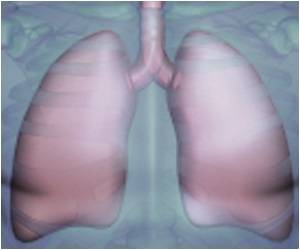A new drug combination with the potential to extend patient survival in lung transplant recipients has been identified. Sirolimus plus Tacrolimus combination helps in the long-term prevention of chronic rejection. Further studies would be required to investigate optimal dosages of the drugs to treat the patients.
Highlights:
- A new drug combination found has the potential to extend survival in lung transplant recipients
- The cell cycle inhibitor, Sirolimus offers a survival advantage of almost two years over its counterparts
- Combining Sirolimus and Tacrolimus helps in the long-term prevention of chronic rejection
- Further studies would be required to investigate optimal dosages of the drugs to treat the patients
Read More..
Lung Transplantation and Immunosuppression
Patients with end-stage lung disease are recommended lung transplantation which could prolong their lives. However, the average survival rate after lung transplant is less than six years, including the slight improvements in recent decades. The most common cause of death following a lung transplant is a chronic rejection and to prevent this, patients will have to take immunosuppressive drugs for the rest of their lives. Immunosuppression, however, may make patients vulnerable to infections and cancers, the second and third leading causes of death after lung transplant.There have been few studies in the field of lung transplantation to identify what is most effective and works best. The U.S. Food and Drug Administration (FDA) has so far not approved specific immunosuppressive drugs or drug regimens pertaining to lung transplant either.
Details of the Study
A research team from the University of Maryland School of Medicine (UMSOM) has developed a new epidemiological analysis of lung transplant data in the United States that focuses on regimens that would prevent the body's immune system from attacking the transplanted lung. They have also been able to identify a drug combination which appears to have the potential to extend patient survival considerably.Aldo T. Iacono, the Hamish S. and Christine C. Osborne Distinguished Professor in Advanced Pulmonary Care at UMSOM, Medical Director of the Lung Health Program at the University of Maryland Medical Center is the lead author of the study. He says, “We postulated that an infrequently used regimen may make a difference in outcome,” and added, “What we found could improve survival of lung transplant patients on a larger scale.”
The team used the database of 9,000 lung transplant patients maintained by the United Network for Organ Sharing (UNOS), patients were categorized by their immunosuppression regimen and then survival rates were compared.
Why Sirolimus?
Sirolimus, an immunosuppressive drug from the class of drugs called cell cycle inhibitors, was singled out. Sirolimus was selected on the basis of a few small, long-term studies that found markedly improved survival, diminished chronic rejection incidence, and improved in lung function in those patients who took it.The study also compared the outcomes of Sirolimus with its counterpart Mycophenolate Mofetil (MMF), a very commonly used cell cycle inhibitor. “According to our study, sirolimus appears to offer a survival advantage of almost two years over MMF,” said the first author Marniker Wijesinha, a UMSOM post-doctoral fellow. “The survival improvement with sirolimus was driven by fewer deaths from the top three causes: chronic rejection, infections, and cancer,” he added.
Drug Combination of Sirolimus and Tacrolimus
Tacrolimus, another immunosuppressant, which is presently used in majority of lung transplant recipients, was commonly used for all the patients of the study as well. Talking about the immunosuppressive regimen followed and how it was altered in this study, Dr. Wijesinha said, “The typical regimen consists of three drugs: tacrolimus, a cell cycle inhibitor, and steroids (prednisone). The variable in this study was the cell cycle inhibitor.”The median survival linked to the Sirolimus plus Tacrolimus combination (8.9 years) was better than the MMF plus Tacrolimus (7.1 years).
Almost 5,800 patients, the majority from the database, were given the MMF plus Tacrolimus combination, which in practice has become the standard immunosuppression after lung transplant. A little over 200 patients received the Sirolimus plus Tacrolimus maintenance therapy.
Sirolimus, however, has a shortcoming as it interferes with the wound healing, which could potentially be life-threatening if the drug is administered in the early days following the transplant surgery. Hence, it is recommended that Prophylactic Sirolimus maintenance therapy be started three to 12 months after surgery. This delay in Sirolimus initiation has been accounted for by the research team allowing no scope for false survival advantage.
Induction therapy, an optional addition to the maintenance therapy, which is used in almost over half of the transplant centers in the United States, was also considered by the research team. Induction therapy involves administering a high dose of immunosuppression to patients for a short duration around three to 14 days, at the time of transplantation. Drugs like basiliximab, daclizumab, alemtuzumab, or antithymocyte globulin are used during the therapy.
Study Outcomes
The database group that was given the Sirolimus plus Tacrolimus for maintenance therapy, without induction therapy emerged as the one with the highest survival among all combinations that were tried.The Dean of UMSOM and University Executive Vice President for Medical Affairs and also the John Z. and Akiko K. Bowers Distinguished Professor, Dr. E. Albert Reece said, “This study illustrates the value of searching through large databases to discern patterns and practices that may not be immediately obvious, but can have a major impact on patient care.” He also mentioned, “Further studies of patients undergoing lung transplantation are needed to confirm the findings associated with sirolimus, but this research is a great start.”
Commenting on the limitations of the study and what is required further, Dr. Wijesinha said, “A particularly useful direction for a future study would be to investigate the optimal dosages of sirolimus and tacrolimus in lung transplant patients (which may vary according to patient characteristics). Our study, unfortunately, could not do this because there were no data on this.”
Dr. Iacono and his team from UMSOM have begun to apply their findings from the study to their standard treatment regimen followed for lung transplant recipients.
The team has switched to the Sirolimus plus Tacrolimus combination to help in the long-term prevention of chronic rejection.
Reference:
- Survival Associated With Sirolimus Plus Tacrolimus Maintenance Without Induction Therapy Compared With Standard Immunosuppression After Lung Transplant - (http://dx.doi.org/10.1001/jamanetworkopen.2019.10297)
Source-Medindia















